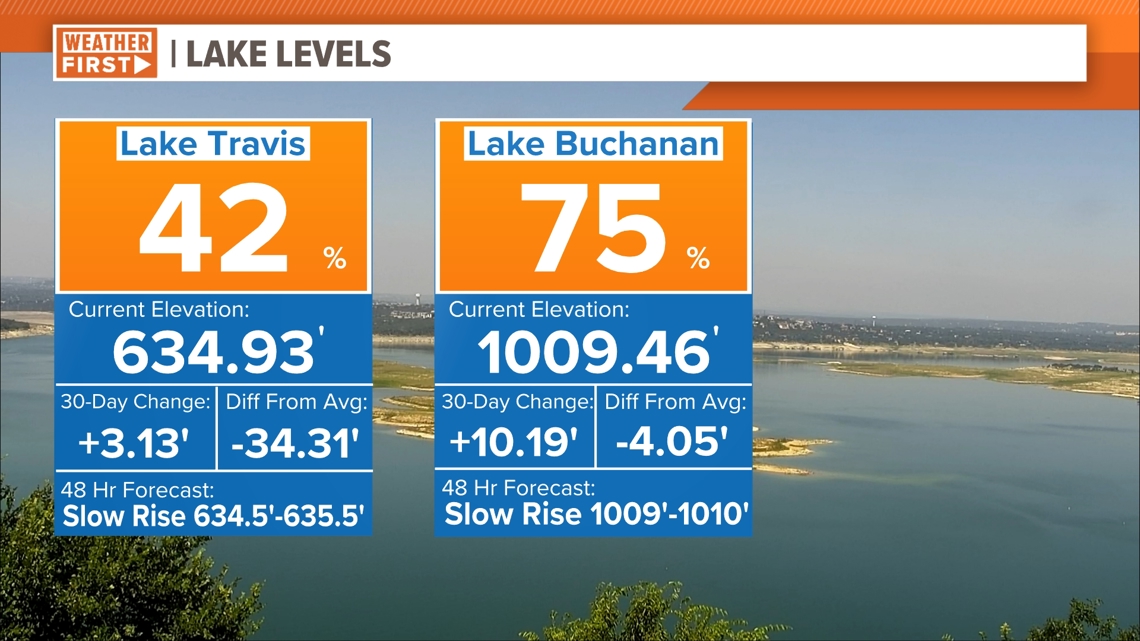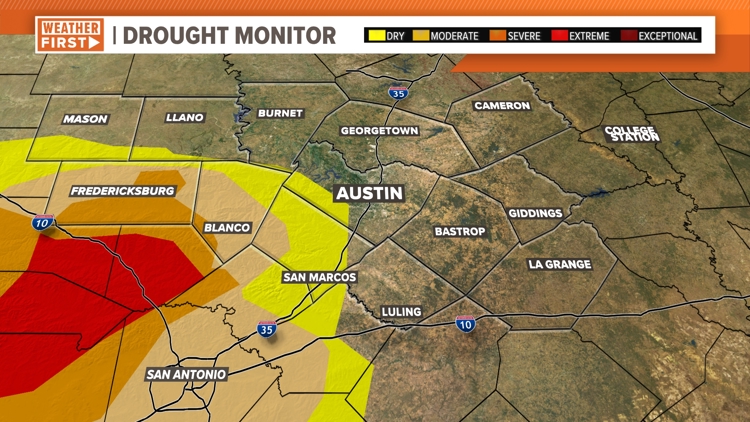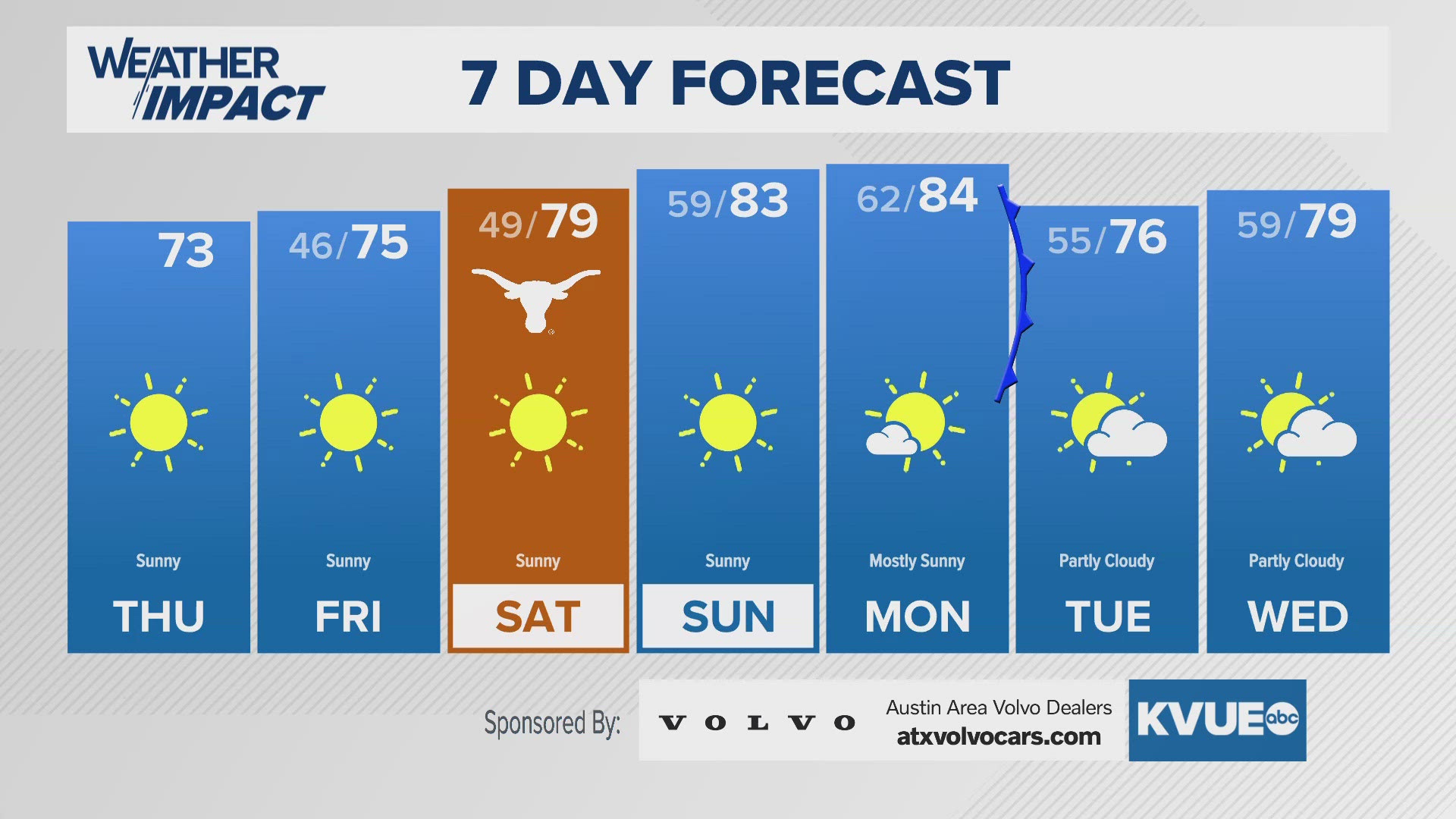AUSTIN, Texas — The latest drought monitor has been released, and there's a couple of pretty major updates that are sure to cheer parts of the southern Hill Country and even the Austin metro.
The City of Austin itself is now completely out of any meteorological drought category for the first time since December 28, 2021, with Camp Mabry finishing May-our wettest month-above average.
The southern Hill Country also saw some significant improvements, with the "extreme" level of drought in southern Gillespie County reduced to the "severe" drought category, and the previously "severe" drought area being reduced to "moderate" drought, thereby leaving the greater-Austin area completely out of the second-highest drought category.
Don't celebrate yet
While we can celebrate that the US Drought Monitor report for the Austin-area has improved, it will take an unseasonable amount of rain to reverse the impact of years of—and continuing—hydrological drought.
The National Oceanic and Atmospheric Administration (NOAA) defines drought as an absence of water. We still have an absence of water in our lakes, our rivers, our soil, and our ground-water supply. So much water is absent that we are still in what the NOAA calls hydrological drought.
What we're celebrating is the freedom from meteorological drought, when an area is dominated by dry-weather patterns.
While a sustained period without meteorological drought will impact our continuing hydrological drought, how Texans decide to use (or not use) water has a major impact on the available water here on the ground.
Water restrictions are still in place for most of the Austin area and will continue until water levels increase and weather patterns (like this one) improve.
Where the lakes stand now
The recent rain will no doubt be of great help to our lake levels, which have steadily improved over the past month. In fact, Lake Buchanan is now at 3/4 of the way full due to the heavy rain along the Colorado River. Lake Travis still has a ways to go at 42% full, but both lakes are forecasting a slow rise over the next few days.


Looking ahead to June
We're tracking a warm June with the potential for above-average temperatures and rainfall across our KVUE counties, so it is entirely possible for the drought situation to continually improve. June is the third-wettest month on average at Camp Mabry, so passing that mark of 3.68 inches would be a huge help to the drought situation, especially if the southern Hill Country receives the majority of the rain.



